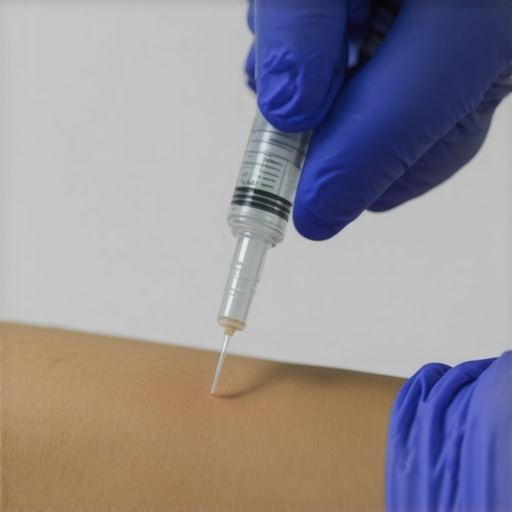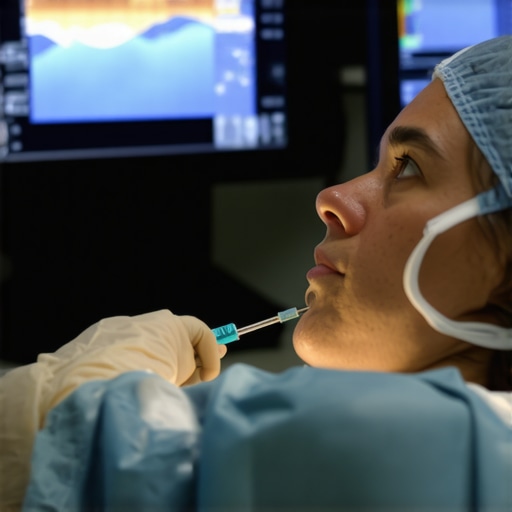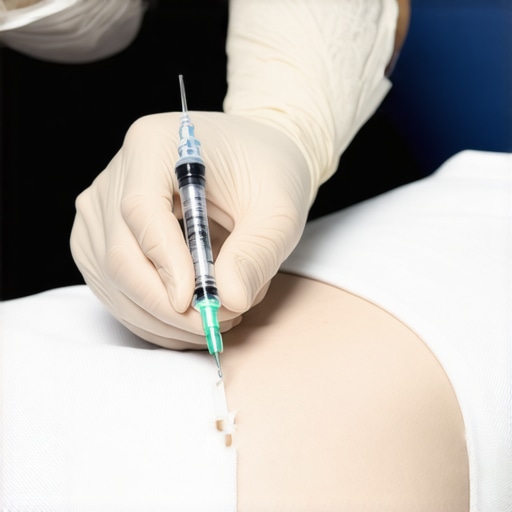Injecting Confidence: Conquering Discomfort and Unlocking Your Weight Loss Potential
Let’s face it, folks: the journey to weight loss via injections isn’t all smooth sailing. Sometimes, it feels like navigating a minefield of discomfort and doubt. But here’s the scoop—armed with the right tips, you can turn those prickly moments into stepping stones toward success. So, grab your proverbial toolkit, and let’s dive into how to manage injection discomfort while maximizing those results.
The Art of Minimizing Injection Discomfort: Tricks of the Trade
Is It Possible to Make Injections Feel Less Like a Needle and More Like a Nudge?
Absolutely! The secret lies in preparation and technique. Warm the medication to body temperature—cold injections can cause unnecessary pain. Use a fine-gauge needle; the thinner, the better for a smoother experience. Also, choose your injection site wisely—rotating between thighs, abdomen, or upper arms—helps prevent soreness and skin irritation. Applying gentle pressure or a cold pack before and after injection can significantly reduce discomfort.
Science-Backed Tips for Better Results and Less Pain
According to experts, proper injection technique is crucial for both safety and efficacy. For instance, the doctor-backed tips emphasize the importance of sterile procedure and correct depth of injection. Additionally, staying consistent with your routine and tracking your progress can boost motivation and results.
Why People Sometimes Miss the Mark (and How to Avoid It)
Ever wondered why some injections seem to produce better results than others? It’s often about adherence and technique. Skipping doses or injecting improperly can hinder fat loss and cause unnecessary side effects. Remember, patience and precision are your best friends on this journey. Want to learn more about optimizing your weekly routine? Check out this guide.
The Big Question: Are You Ready to Take Control of Your Weight Loss?
If you’re committed to transforming your health, managing injection discomfort is just one part of the puzzle. Have you shared your experiences or questions? Drop a comment below—your insights could help others navigate their own path. Remember, expert advice isn’t just a luxury; it’s your secret weapon. For instance, reputable sources like Harvard Medical School highlight the importance of medical supervision when using medications like GLP-1 receptor agonists for weight loss.
So, what’s the next step? Educate yourself, stay consistent, and don’t be afraid to reach out for professional support. The road to a healthier you is paved with small, smart choices—each injection, each effort, bringing you closer to your goal.
Beyond the Needle: Rethinking Injection Strategies for Long-Term Success
While managing injection discomfort is crucial for adherence, the real question is: how can we leverage this understanding to boost overall effectiveness of weight loss treatments? The answer lies in a nuanced approach that combines technique, lifestyle integration, and ongoing medical guidance. For example, incorporating proper injection techniques—like rotating sites and maintaining sterile procedures—not only reduces pain but also prevents complications like skin irritation or infection. Want to learn more about how to fine-tune your injection routine? Visit this resource.
Are You Fully Capitalizing on the Synergy between Lifestyle and Medication?
Many experts agree that medication alone isn’t a silver bullet. Instead, the most successful weight loss journeys harness the power of combined strategies—dietary adjustments, physical activity, and behavioral changes—all supported by medically supervised injections. This holistic approach not only enhances fat loss but also sustains results long-term. For a comprehensive guide on integrating these elements seamlessly, check out this article.
What Role Does Ongoing Medical Supervision Play in Ensuring Safe and Effective Outcomes?
Continuous oversight by healthcare professionals ensures that your treatment remains tailored to your evolving needs, minimizing risks and optimizing results. Regular check-ins allow adjustments in dosage or injection frequency, and help identify early signs of side effects. As noted by the medical community, this personalized oversight is fundamental to achieving sustainable weight loss success.
Share your experiences or questions below—your insights could inspire others to refine their approach. Remember, expert-backed advice and a proactive mindset are your best tools on this transformative journey. For deeper insights on safe injection practices, visit this guide.
Refining Injection Strategies: The Nuanced Art of Pain Reduction and Efficacy Enhancement
While fundamental techniques lay the groundwork for comfortable injections, there exists a realm of advanced strategies that can elevate your experience and outcomes. For instance, employing ultrasound-guided injections—a technique traditionally reserved for clinical settings—can dramatically improve accuracy, reduce tissue trauma, and minimize discomfort, especially in challenging anatomical areas. Although this approach requires specialized equipment and training, emerging portable ultrasound devices are making this technology more accessible for dedicated self-administration or supervised use.
How Can Precision in Injection Depth and Angle Impact Your Results?
Optimal injection depth and angle are pivotal for ensuring medication efficacy and reducing adverse effects such as skin irritation or uneven fat loss. For subcutaneous injections targeting fat reduction, typically at a 45-degree angle with a shallow depth, deviating from proper technique can lead to suboptimal absorption or unintended intramuscular delivery, which may cause pain or systemic side effects. Advanced practitioners utilize skinfold calipers or video-guided visualization to refine their technique, emphasizing the importance of personalized approaches based on individual anatomy.
Innovative Approaches to Reduce Injection Anxiety and Discomfort
Beyond technique, psychological readiness plays a crucial role. Techniques like guided imagery and deep breathing exercises before injection can significantly diminish anxiety, translating into less muscle tension and pain perception. Moreover, integrating topical anesthetics such as lidocaine patches or sprays—applied 20-30 minutes prior—can further blunt nociceptive signals, creating a near-painless experience. For those particularly sensitive, combining multiple modalities yields the best results.
< >
>
Additionally, recent research suggests that neuromodulation techniques, such as transcutaneous electrical nerve stimulation (TENS), may have future applications in managing injection discomfort, although more clinical trials are needed. Staying abreast of these innovations empowers users to tailor their approach, ensuring comfort without compromising efficacy.
Addressing the Nuances of Site Rotation and Skin Health
Proper site rotation not only prevents soreness but also preserves skin integrity. Advanced strategies involve mapping injection zones using digital skin charts or 3D imaging to maintain a consistent rotation schedule. This meticulous planning minimizes the risk of lipohypertrophy or fibrosis, common pitfalls in repeated injections at the same site. Consulting with healthcare professionals for personalized site mapping is highly recommended, especially for long-term users.
Synergizing Injection Technique with Lifestyle Interventions for Long-Term Success
Optimized injection practices are a cornerstone, but their true power manifests when integrated with lifestyle modifications. Nutritional strategies, such as anti-inflammatory diets rich in omega-3 fatty acids, can reduce localized inflammation from injections. Meanwhile, regular physical activity enhances lymphatic drainage, promoting faster absorption and reducing swelling or discomfort. This holistic approach not only enhances immediate results but sustains long-term progress.
Why is Continuous Feedback and Adjustment Crucial for Ongoing Success?
Exceptional outcomes stem from a cycle of assessment, feedback, and adjustment. Utilizing tools like digital journals or mobile apps to log injection experiences, side effects, and results allows for data-driven modifications. Regular consultation with medical professionals ensures that technique, site selection, and medication dosage evolve in tandem with your body’s responses, safeguarding safety and efficacy. Remember, personalized medicine is the future of weight management.
If you’re eager to deepen your understanding of advanced injection techniques and their role in your weight loss journey, consider exploring specialized training programs or consulting with healthcare providers experienced in injectable therapies. Your commitment to mastering these nuances can unlock new levels of comfort and success—making your path to health smarter, safer, and more effective.
Mastering Precision: How Advanced Injection Techniques Elevate Your Weight Loss Outcomes
For those committed to optimizing their injectable weight loss regimen, embracing innovative techniques can make a tangible difference. Ultrasound-guided injections, for example, are a leap forward—allowing for unparalleled accuracy in medication delivery. While traditionally confined to clinical environments, portable ultrasound devices are increasingly accessible, empowering even dedicated self-administrators to achieve precision comparable to professional settings. This method not only enhances efficacy but also minimizes tissue trauma, reducing discomfort and potential complications.
What is the impact of injection angle and depth on medication absorption and safety?
Expert practitioners emphasize that injecting at the correct angle—typically 45 degrees for subcutaneous fat targeting—and at an appropriate depth ensures optimal absorption. Deviations can lead to subpar results or adverse effects such as skin irritation or intramuscular injection, which may cause pain or systemic side effects. Utilizing tools like skinfold calipers or even video-guided visualization helps tailor injection depth for each individual, ensuring consistency and safety. According to a study published in the Journal of Clinical Medicine, precise injection technique correlates strongly with treatment success and minimized side effects, underscoring the importance of mastery over these nuanced skills.
< >
>
Beyond technical mastery, psychological readiness and site management play crucial roles. Techniques like guided imagery or deep breathing exercises before injections can significantly diminish anxiety, leading to smoother, less painful experiences. Topical anesthetics, such as lidocaine patches, can further blunt pain signals. Combining these approaches creates a near-painless environment, fostering adherence and confidence in your routine.
How can site rotation and skin health management prevent long-term complications?
Expert advice advocates meticulous site rotation—using digital skin charts or even 3D imaging—to avoid lipohypertrophy, fibrosis, and skin irritation. Proper rotation preserves skin integrity and ensures consistent medication absorption. Consulting with healthcare professionals for personalized site mapping and rotation schedules is especially recommended for long-term users, as it sustains both safety and efficacy. Maintaining skin health through hydration and gentle massage also supports tissue resilience, reducing discomfort over time.
Integrating Injection Precision with Lifestyle Modifications for Enduring Results
The true power of advanced injection strategies lies in their integration with lifestyle interventions. Nutritional approaches—like anti-inflammatory diets rich in omega-3s—can mitigate localized inflammation caused by injections. Regular physical activity enhances lymphatic drainage, facilitating faster absorption and reducing swelling. These synergistic practices not only amplify immediate results but also sustain long-term weight management success, transforming the injection routine into a comprehensive health strategy.
Why is continuous feedback and personalized adjustment essential for sustained success?
Achieving lasting results requires a dynamic approach—logging injection experiences, side effects, and outcomes through digital tools enables data-driven adjustments. Regular consultations with healthcare providers ensure that techniques, site selection, and medication dosages evolve with your body’s responses. As highlighted in the medical literature, personalized oversight enhances safety, accelerates progress, and prevents setbacks. Engaging actively in this feedback loop transforms your journey into a tailored, adaptive process.
If you’re eager to deepen your mastery of injection techniques and their role in sustainable weight loss, consider seeking specialized training or consulting with experienced healthcare professionals. Embracing these expert strategies elevates your routine, making your path to health smarter, safer, and more effective.
Expert Insights & Advanced Considerations
1. Precision in Injection Technique Enhances Outcomes
Experts emphasize that meticulous attention to injection depth, angle, and site rotation significantly improves medication absorption and minimizes adverse effects. Utilizing tools like skinfold calipers or even ultrasound guidance can elevate the accuracy of self-administered injections, ensuring consistent and safe results.
2. Psychological Preparation Reduces Discomfort
Advanced strategies involve psychological techniques such as guided imagery and deep breathing exercises prior to injections. These methods help lower anxiety levels, leading to less muscle tension and pain perception, thereby improving adherence and overall experience.
3. Site Rotation and Skin Health Are Critical for Long-Term Success
Implementing digital skin maps or 3D imaging for site rotation prevents complications like lipohypertrophy. Regular skin care, hydration, and gentle massage support tissue health, reducing discomfort and maintaining injection efficacy over time.
4. Integrating Lifestyle Modifications Amplifies Results
Combining precise injection techniques with anti-inflammatory diets and physical activity enhances fat loss and sustains long-term weight management. This holistic approach transforms injections from isolated interventions into part of a comprehensive health strategy.
5. Ongoing Medical Supervision Ensures Safety and Personalization
Regular consultations with healthcare professionals allow for tailored adjustments in dosage, technique, and site selection. Personalized oversight minimizes risks, optimizes outcomes, and reinforces safe practices, especially in long-term treatment plans.
Curated Expert Resources
- American Society of Metabolic and Bariatric Surgery (ASMBS): Offers evidence-based guidelines on injectable weight loss therapies and procedural best practices.
- Harvard Medical School’s Weight Loss Center: Provides accessible, expert-backed research and clinical insights into safe medication use and lifestyle integration.
- Journal of Clinical Medicine: Publishes peer-reviewed studies on injection techniques, site management, and long-term safety strategies.
- National Institute of Diabetes and Digestive and Kidney Diseases (NIDDK): Contains comprehensive resources on safe medication practices and patient education.
- Consult with Certified Medical Professionals: Personalized advice from endocrinologists or bariatric specialists remains invaluable for tailored treatment approaches.
Final Expert Perspective
Mastering advanced injection strategies and integrating them with lifestyle modifications are pivotal for optimizing injectable weight loss treatments in 2025. These expert insights not only improve safety and comfort but also elevate outcomes, transforming the weight management journey into a sustainable, health-enhancing process. For those committed to excellence, engaging with professional resources and maintaining ongoing medical oversight are essential steps toward lasting success. Dive deeper into these topics, share your experiences, or consult with specialists to elevate your approach—your health deserves nothing less.

